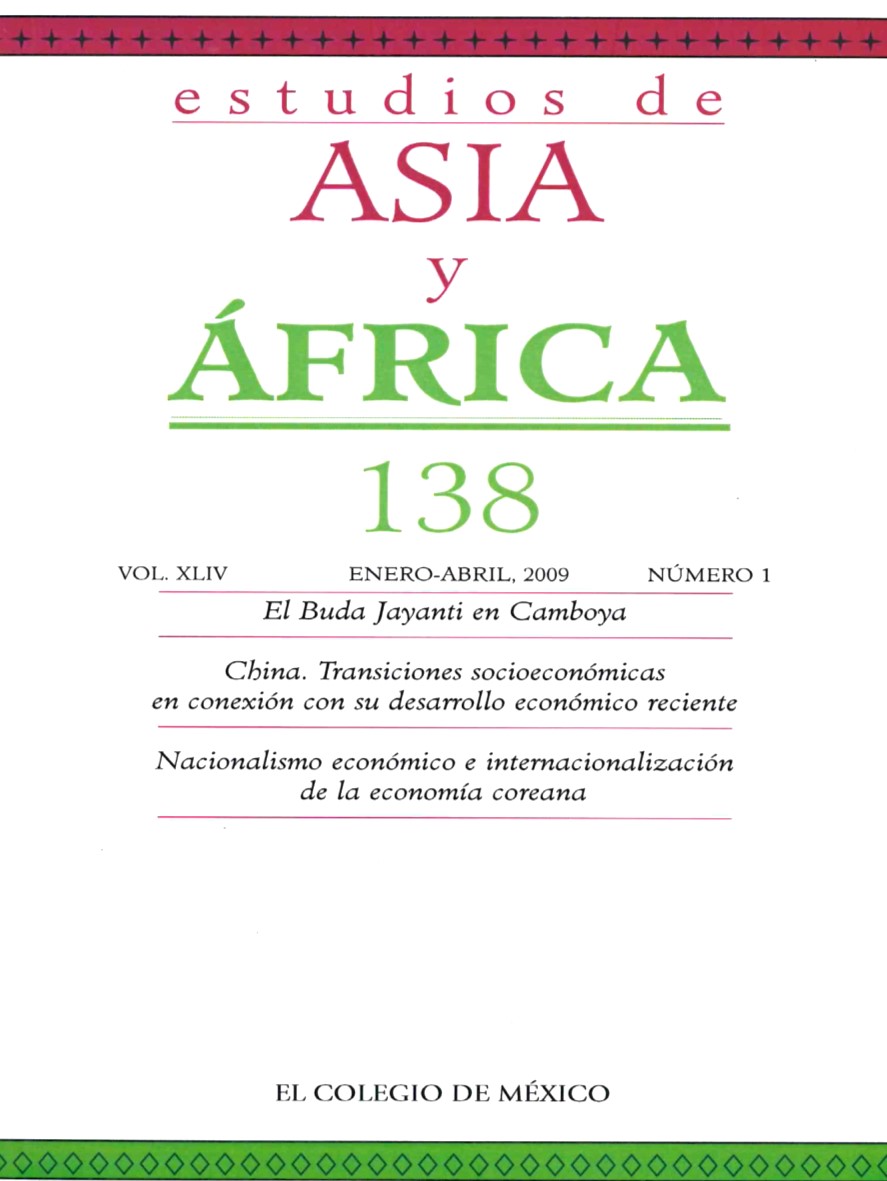Abstract
This article seeks to highlight certain socioeconomic transitions that have accompanied and helped bolster the last three decades of economic growth experienced in the People’s Republic of China. The paper reflects on a period when China made the transition from a socialist economy to a market economy, and from a primarily agricultural and rural society to an increasingly, urban, industrial and service oriented one. This multiple transition process has benefited from a clearly one-off “demographic dividend”, in so far as the labour force has seen the inflow of the generations born in the 1960’s through to 1980’s, which if properly harnessed will result in China's ability to maintain the current high levels of internal saving and investment. The key argument proposed in this paper is that many of these critical comparative advantages enjoyed by China during the last 30 years of development have been, to an extent, one-off factors with a finite duration. Moreover, the rate and nature of the economic development has meant that certain social costs and problems have developed which now require new solutions. It is for this reason that the current Chinese leadership has started to modify the nature of the economic development strategy in China, introducing what they refer to as “scientific, harmonious, balanced and environmentally sustainable development”. The unknown factor around all of the above is whether the existing political establishment and system will be flexible and capable of realising these objectives.References
CIA (Central Intelligence Agency), The World Factbook 2008, en http://www.cia.gov/library/publications/the-world-factbook/geos/ch-html.
Feng, Wang y Andrew Mason, The Demographic Factor in China’s Transitions, ponencia presentada en seminario: “China’s Economic Transition: Origins, Mechanism, and Consequences”, en Pittsburgh, EE. UU., 4-7 de noviembre de 2004.
Fewsmith, Joseph, “Promoting the Scientific Development Concept”, en China Leadership Monitor, núm. 11, verano de 2004.
Goldstein, Morris y Nicholas R. Lardy, “What Kind of Landing for the Chinese Economy?”, Policy Briefs, en International Economics, núm. PB04-7, noviembre de 2004, Washington, EE. UU., Institute of International Economics, 11 pp.
Huang, Ping y Zhan Shaohua, Internal Migration in China: Linking It to Development, ponencia presentada en el seminario: “Regional Conference on Migration and Development in Asia”, efectuado en Lanzhou, República Popular China, 14-16 de marzo de 2005.
IMF (International Monetary Fund), World Economic Outlook, octubre de 2007 y abril de 2008. IMF Research Department, provee interpretación basada en cifras de su World Economic Outlook.
Lam, Willy, “China’s Reforms Buried Under Rubble”, en Far Eastern Economic Review, vol. 171, núm. 5, junio de 2008, pp. 30-33.
____________, “Hu’s Disappointments at the 17th Party Congreso”, en China Brief. A Journal of Analysis and Information, vol. VII, t. 19, 17 de octubre de 2007.
Liang, Zai y Zhongdong Ma, “China’s Floating Population: New Evidence from the 2000 Census”, en Population and Development Review, vol. 30, núm. 3, septiembre de 2004.
Lichtensztejn, Samuel, Enfoques y Categorías de la Política Económica, México, Breviarios de Investigaciones Económicas, Instituto de Investigaciones Económicas, Universidad Nacional Autónoma de México y Universidad Veracruzana, 2008.
Lin, Justin Yifu, Lessons of China’s Transition from a Planned Economy to a Market Economy, China Center for Economic Research, Beijing, RPCH, Working Papers Series, núm. E2004001, febrero de 2004.
Lum, Thomas y Dick K. Nanta, “China’s Trade with the United States and the World”, CRS Report for Congress, Order Code RL31403, 18 de agosto de 2006.
McGranahan, Gordon y Cecilia Tacoli, Rural-Urban Migration in China: Policy Options for Economic Growth, Environmental Sustainability and Equity, Working Paper núm. 12, Londres, Reino Unido, International Institute for Environment and Development, mayo de 2006.
National Bureau of Statistics of the People’s Republic of China (NBS), China Statistical Yearbook, Beijing, China Statistics Press, varios años.
Naughton, Barry, The Chinese Economy: Transitions and Growth, Cambridge, Massachusetts, MIT Press, 2007.
Pei, Minxin, China’s Trapped Transition: The Limits of Developmental Autocracy, Massachusetts y Cambridge, Londres, Harvard University Press, 2008.
Rodríguez y Rodríguez, María Teresa, Agricultura, Industria y Desarrollo Económico: El Caso de China, núm. 15 de Cuadernos de Política Internacional Nueva Época, México, Instituto Matías Romero, Secretaría de Relaciones Exteriores, 2007.
Solinger, Dorothy, Arthur Brooks y Charles Wolf, Jr., “Inequality’s Specter Haunts China”, en Far Eastern Economic Review, vol. 171, núm. 5, junio de 2008, pp. 19-24.
Srinivasan, T. N., China, India and the World Economy, Stanford Center for International Development, Stanford, California, EE. UU., Working Paper núm. 286, julio de 2006, 46 pp.
Tacoli, Cecilia (comp.), The Earthscan Reader in Rural-Urban Linkages, Londres y Sterling, Virginia, Earthscan, 2006.
UNCTAD/WTO, International Trade Centre, International Trade Statistics 2001-2005, en http://www.intrace.org/tradstat/sitc3-3d/.
Wang, Feng y Andrew Mason, The Demographic Factor in China’s Transitions, ponencia presentada en el seminario: “China’s Economic Transition: Origins, Mechanism, and Consequences”, en Pittsburgh, EE. UU., 4-7 de noviembre de 2004.
World Bank, China 2020: Disparities in China. Sharing Rising Incomes, cuaderno dentro de la serie China 2020, Washington, D.C., 1997.
Yang, Dennis Tao y Cai Fang, The Political Economy of China’s Rural-Urban Divide, Working Paper núm. 62, California, Stanford University, Center for Research on Economic Development and Policy Reform, agosto de 2000.
This work is licensed under a Creative Commons Attribution-NonCommercial-NoDerivatives 4.0 International License
Copyright 2022 Estudios de Asia y África


